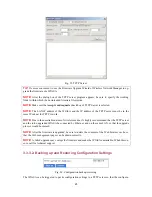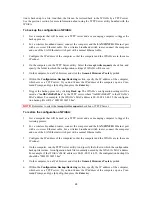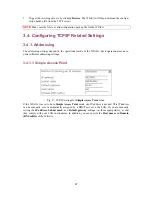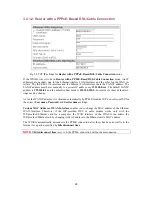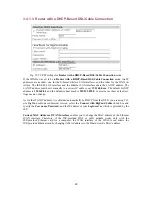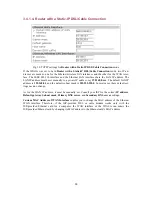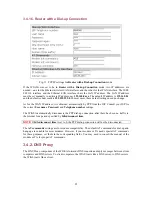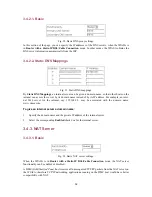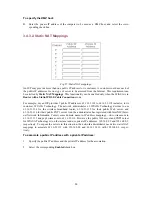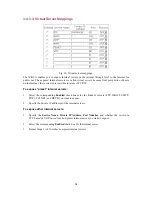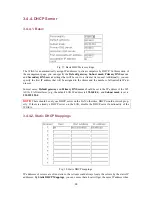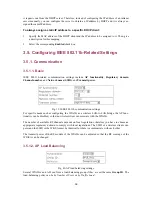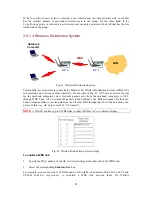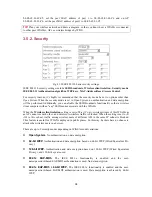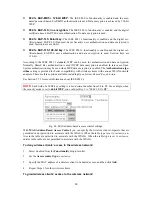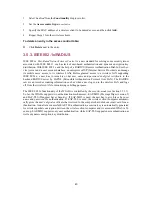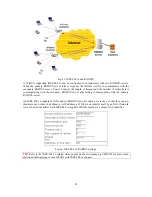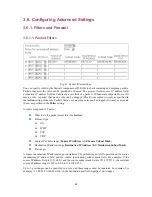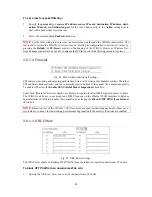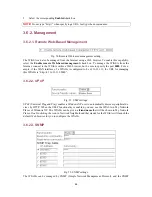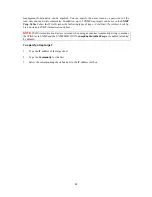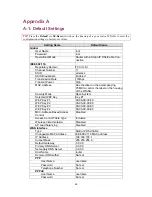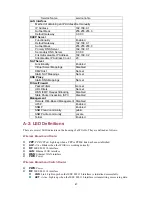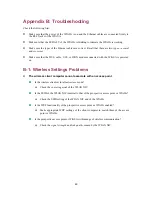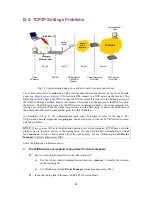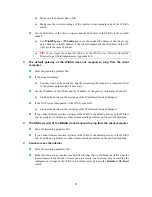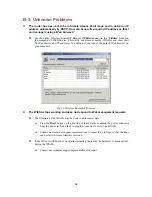
802.1x EAP-MD5 + 128-bit WEP.
The IEEE 802.1x functionality is enabled and the user-
name/password-based EAP-MD5 authentication is used. Data encryption is achieved by 128-bit
WEP.
802.1x EAP-TLS; no encryption.
The IEEE 802.1x functionality is enabled and the digital
certificate-based EAP-TLS user authentication. No data encryption is used.
802.1x EAP-TLS 64-bit key.
The IEEE 802.1x functionality is enabled and the digital cer-
tificate-based EAP-TLS (Transport Layer Security) user authentication and data encryption is
used. Session keys are 64-bit.
802.1x EAP-TLS 128-bit key.
The IEEE 802.1x functionality is enabled and the digital cer-
tificate-based EAP-TLS user authentication and data encryption is used. Session keys are
128-bit.
According to the IEEE 802.11 standard, WEP can be used for authentication and data encryption.
Normally, Shared Key authentication is used if WEP data encryption is enabled. In rare cases, Open
System authentication may be used when WEP data encryption is enabled. The
Authentication algo-
rithm
setting is provided for better compatibility with wireless clients with various WLAN network
adapters. There are three options available, including
Open System
,
Shared Key
, and
Auto
.
See Section 3.5.3 for more information about IEEE 802.1x.
NOTE:
Each field of a WEP key setting is a
hex-decimal
number from 00 to FF. For example, when
the security mode is set to
64-bit WEP
, you could set Key 1 to “00 01 2E 3A DF”.
Fig. 44. MAC-address-based access control settings.
With
MAC-Address-Based Access Control
, you can specify the wireless client computers that are
permitted or not permitted to associate with the WIASA. When the table type is set to
inclusive
, en-
tries in the table are permitted to associate with the WIASA. When the table type is set to
exclusive
,
entries in the table are not permitted to associate with the WIASA.
To
deny
wireless clients’ access to the wireless network:
1. Select
Enabled
from the
Functionality
drop-down list.
2. Set
the
Access control type
to
exclusive
.
3.
Specify the MAC address of a wireless client to be denied access, and then click
Add
.
4.
Repeat Steps 3 for other wireless clients.
To
grant
wireless clients’ access to the wireless network:
39

